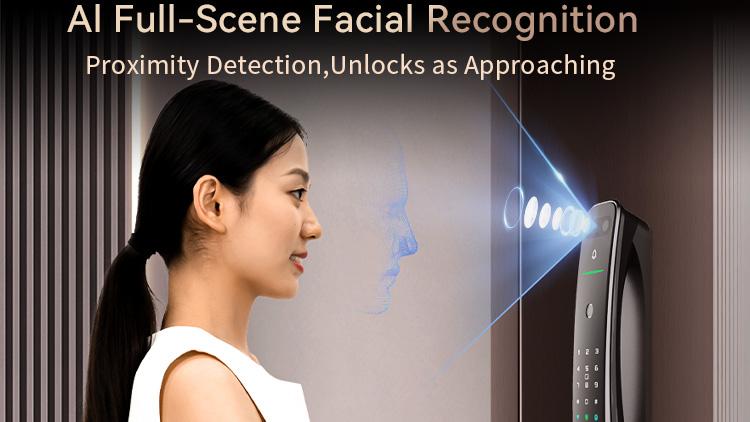The new technology era has introduced advanced forms of securing geofenced premises. One of the revolutionary advancements in access control management systems is the use of biometric systems with face recognition technology. Unlike the manual locks, which require a key or even the use of a password, these smart locks make use of seamless biometric access control systems. As far as home security is concerned, a residential smart lock with a face recognition system will provide high security with an unmatched level of convenience.
Facial Recognition Technology in Modern Security
Facial recognition systems work by examining distinctive facial components like eye distance, jaw structure, and other minute patterns. The minute data points are then catalogued in a forensically secure vault within the lock system. Each time access is sought, the system analyses real-time outputs vis-à-vis the archived data to perform validation. This system minimises the chances of key loss and code theft. Plus, the system is versatile to varying illumination and can function optimally in the day and at night. The outcome is an additional layer of security that is clearly superior to the conventional forms.
FaceScan Smart Locks for the Homeowner
The new technology of facial recognition has advantages for homeowners to integrate face recognition technology to unlock the doors of their homes. Homeowners no longer need to fumble around for a physical key that is sometimes lost and duplicated without permission. Homeowners face less frustration with automated doors that unlock fully within one second of registered face recognition. This technology provides a significant benefit of tracking access, enabling users to know who came in and when. This information is greatly useful for families with younger children and for people who lease out properties. For additional control, booklets and info to geo-fence a range can be provided to visitors or maintenance, and full access can be retained to the home environment.
Technological Evolution and Its Ease of Use
Beyond the primary purpose of smart locks, the convenience of technology is added value. Most modern systems have smartphones, tablets and additional devices integrated so that homeowners can control access from a remote location. While the resident is away, the host can control access and video capture the resident’s entrance. Wi-Fi and Bluetooth provide users with the ease of checking storefront access from any location. This ease of access provides added value to smart residential lock systems and promotes their use by increasing their functionality in current-day living.
Satisfying the Standard of Privacy and Safety
Privacy remains an area of concern in relation to biometric data. With regard to face-scan and smart lock devices, the concern has been dealt with by making the devices store data in an encrypted form locally and avoiding cloud-based storage, which in turn diminishes the threat of cyber attack. Families and individuals enjoy the benefit of knowing their biometric data is securely locked in the lock system and is not clouded. In addition, these locks have multi-layered protection of recognition systems. These locks have backup methods like mechanical keys and fingerprint scanners. These locks guarantee uninterrupted access in case of power failure and technical interruptions.
Modifying the Market for Residential Security
The adoption of face recognition technology has enhanced smart lock adoption to a higher level. There is a higher demand in metropolitan and urban areas, as security and convenience are highly valued. Smart locks are now a standard feature in residential properties like apartments, smart homes, and villas. There is a shift in buyer behaviour as the demand for mechanical systems declines, leading consumers to seek more advanced and technical systems. Property developers and managers understand the value added to the property after installing these systems, hence it increases the property’s resale value.
Future Outlook of Face Recognition Smart Locks
The anticipated expansion of technology will certainly resonate in the adaptability of face-scan smart locks, making them more sophisticated and efficient, and capable of retaining vague recognition without a false positive. Upcoming systems employ machine learning, and could have the potential of voice activation and other multi-layered biometrics systems to increase security and electronic shelf-life durability. Green bolts and other energy-saving devices may also become popular among manufacturers, indicating a positive correlation to eco-sustainability. There is no denying that the continuous advancement of this technology will, more likely than not, redefine the standards of home security in the next decade.
Conclusion
Homeowners have broadened the spectrum of things that can be integrated in a smart door lock, with biometric verification and face recognition technology systems offering a perfect pixel blend of security and utmost convenience. Biometric systems have face recognition technology that is pioneering modern configurations for smart locks across the globe. As the world grapples with a privacy deficit and brute force invasion, the technology integrated in smart locks has redefined the paradigm by easing security inconveniencies while improving privacy. The widespread adoption of smart door locks that have face recognition technology acts as a paradigm shift and a positive anchor for change in the advancement of a more integrated, eco-sustainable world.

